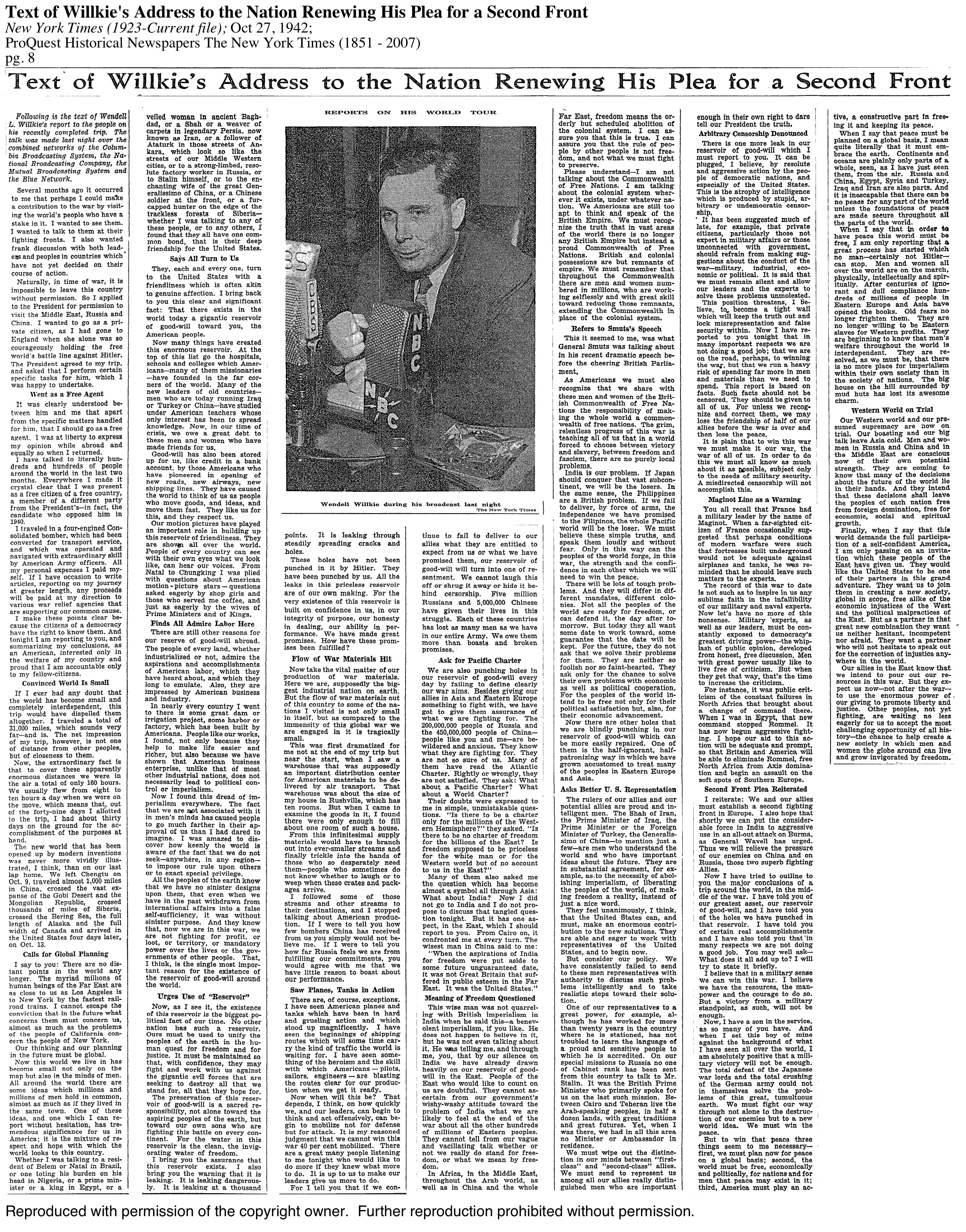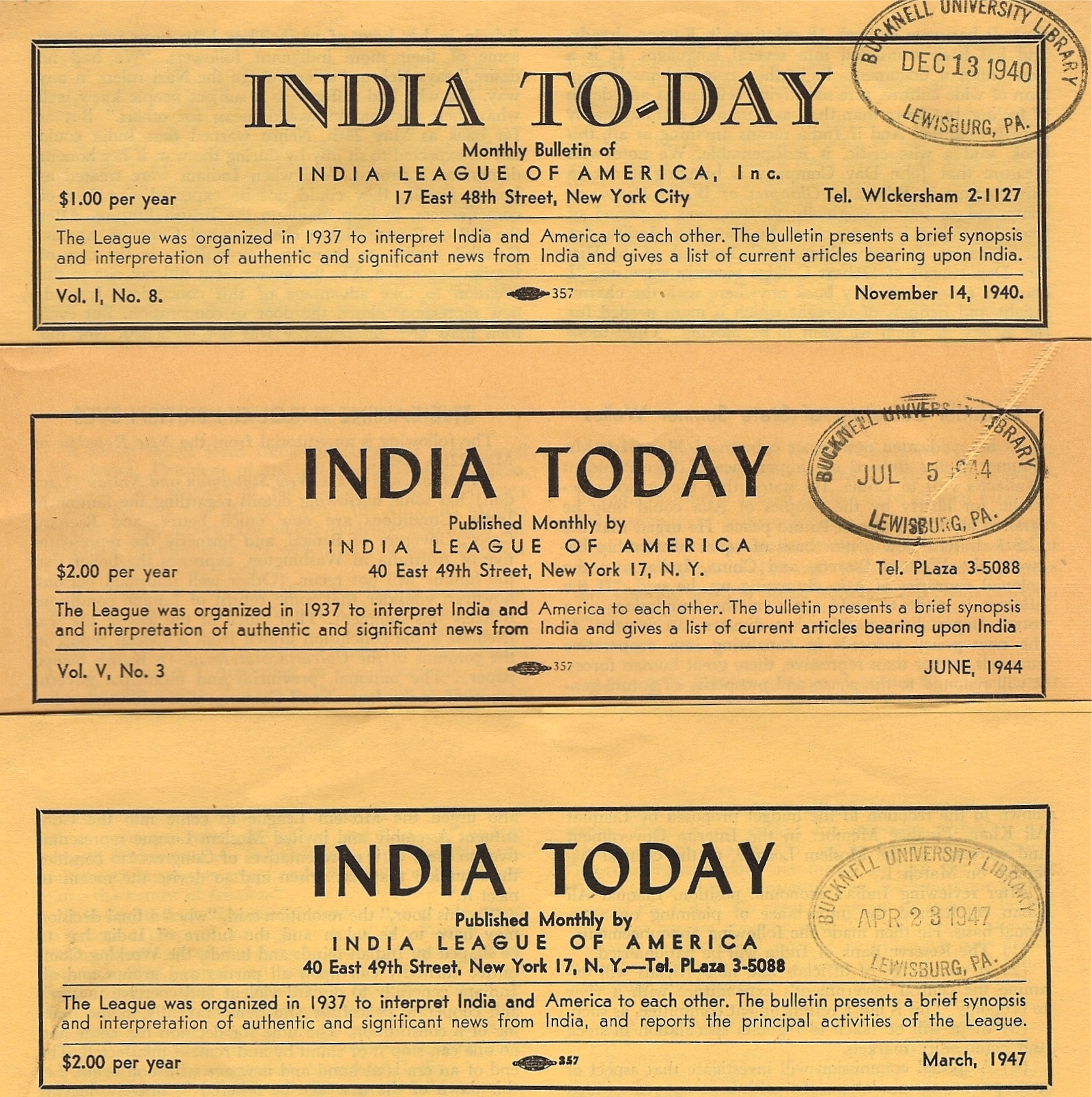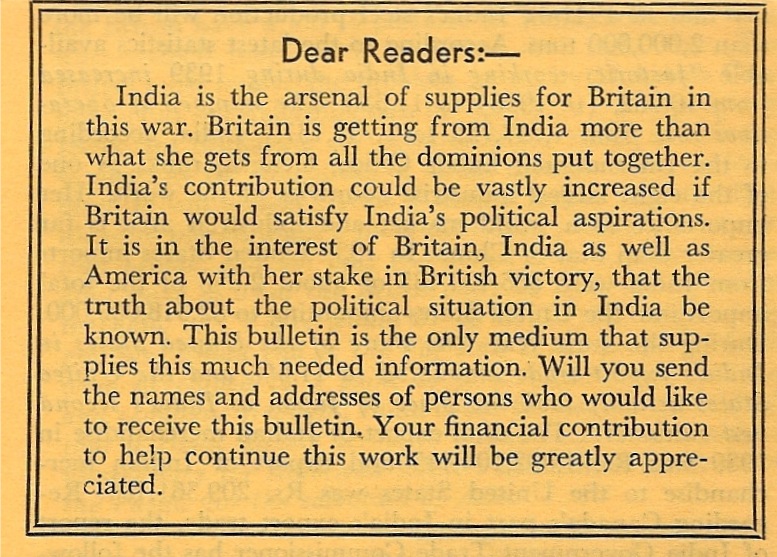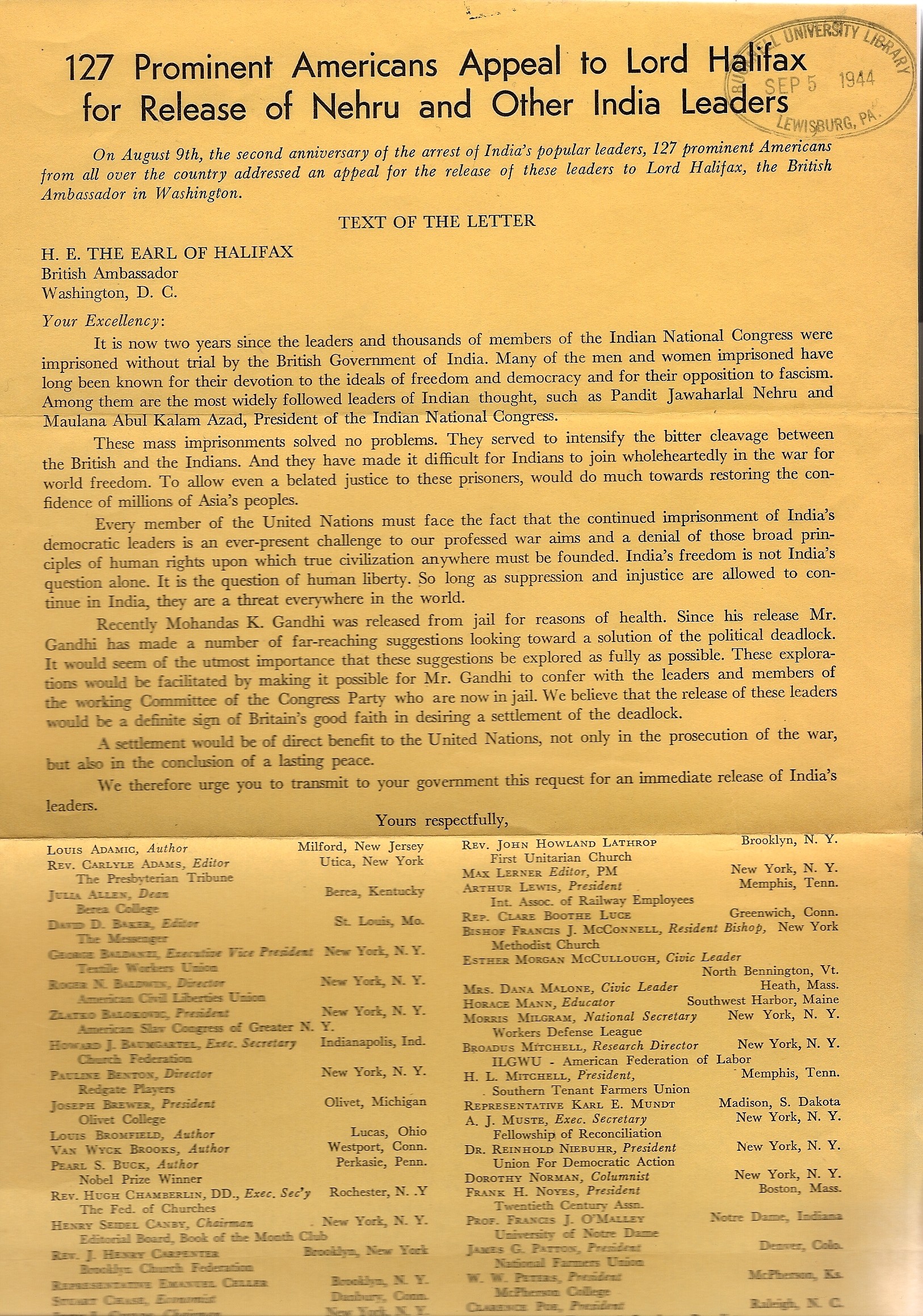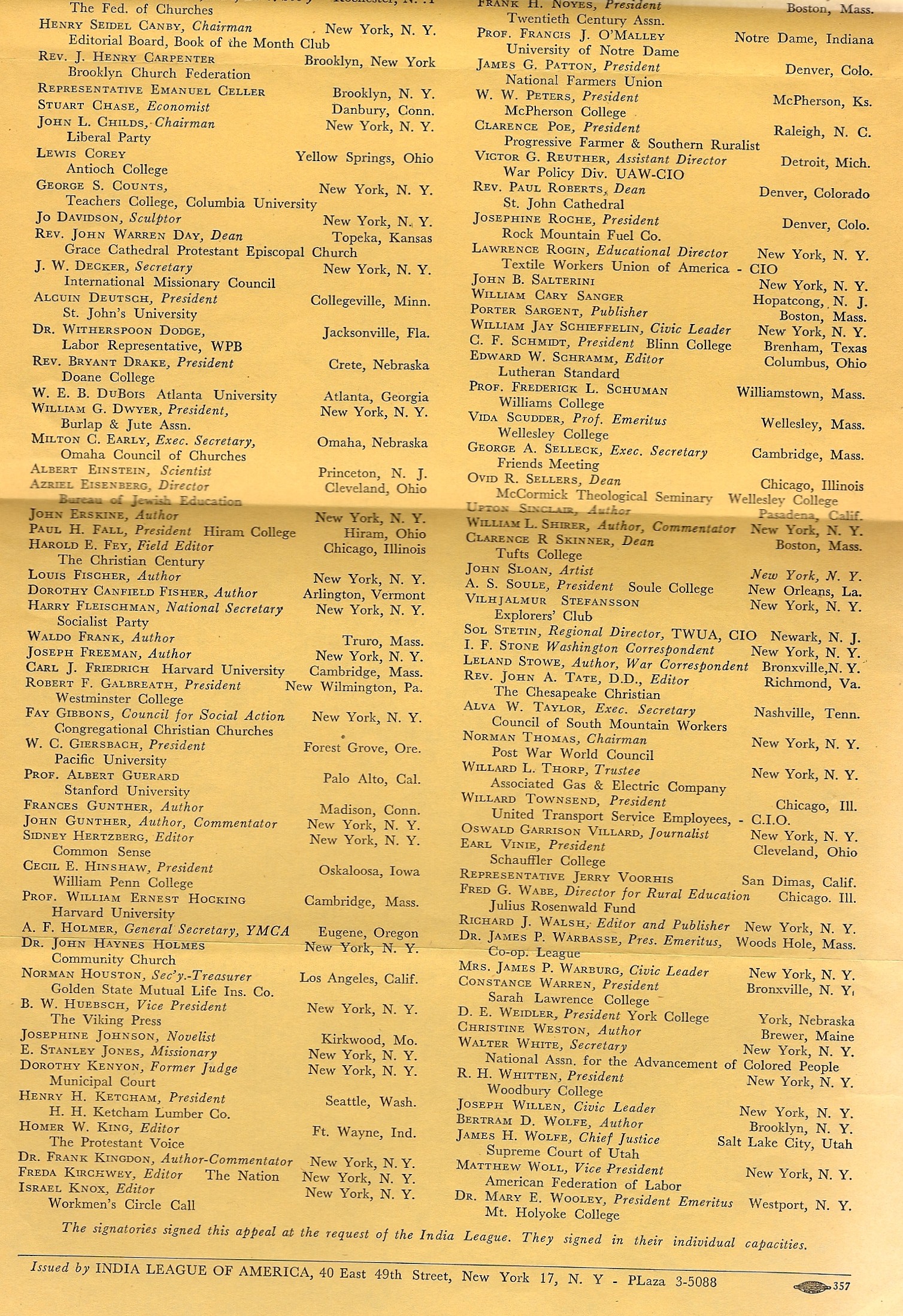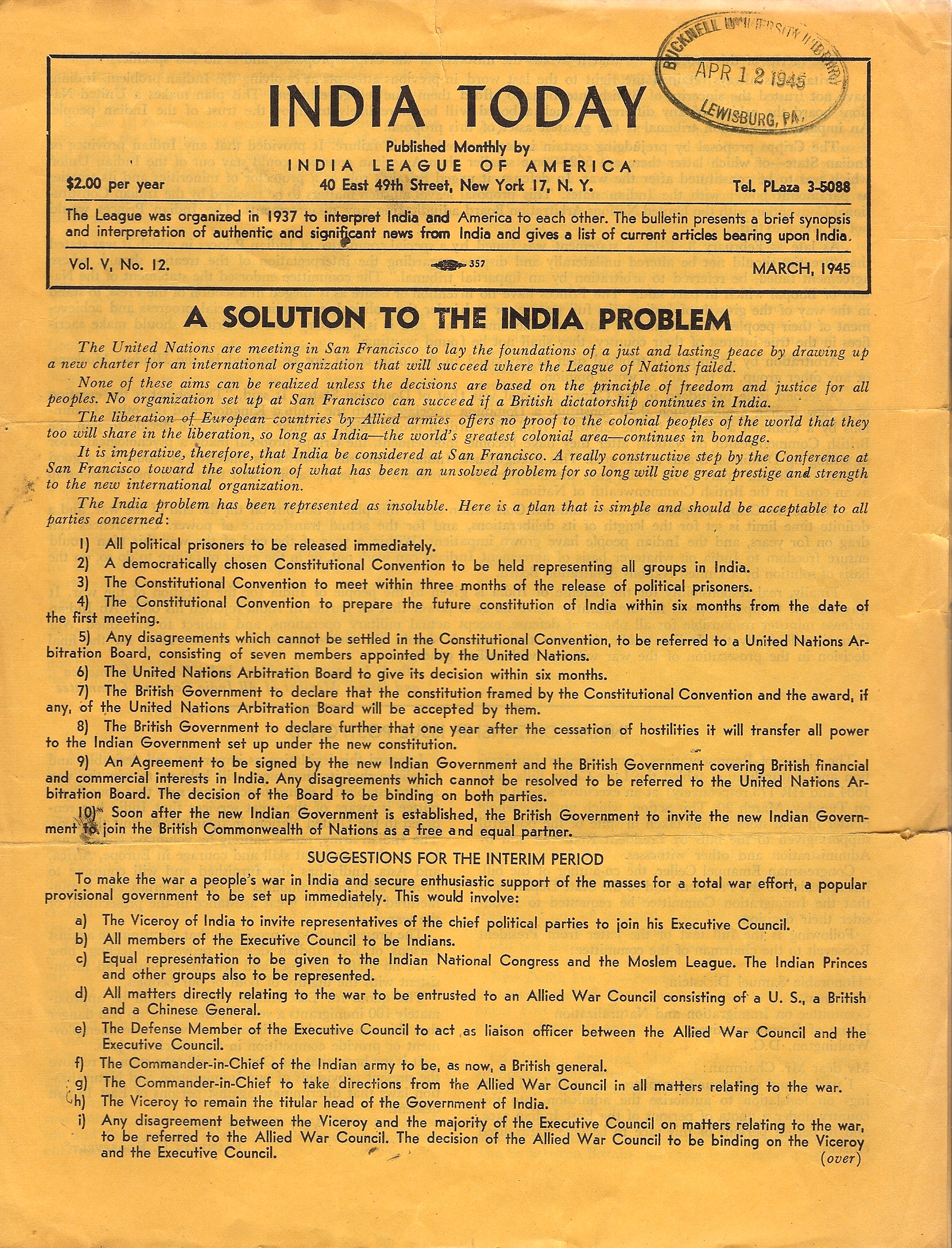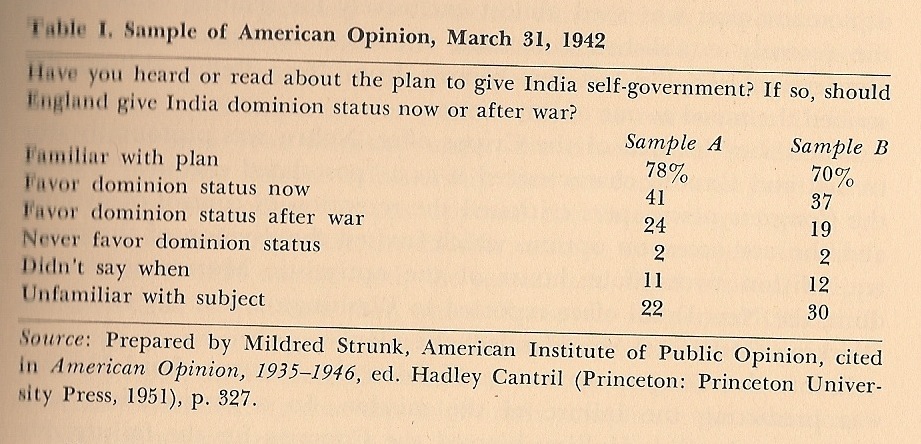“Horace I. Poleman on India and America”
- Poleman was the head of the Southern Asian Section of the Library of Congress and a former student of W. Norman Brown at the University of Pennsylvania and a “driving force in the establishment of South Asian studies in the United States” (Gould 372)
- Describes his impressions after traveling to India in 1939
- Emphasizes the historical legacy of Indian civilization
- “most Americans thought of India still as a land of grotesque mysticism, snake-charmers, the rope trick, horrible practices in the name of religion, and a funny little man in a loin cloth….I found a land of grim realism, enterprise, accomplishment, and purpose.”
- Writes that the most important step to take in the future is furthering Indian education in America
- “In the world of the future we shall need to know much more about each other if we are to have intelligent and peaceful relations.”

